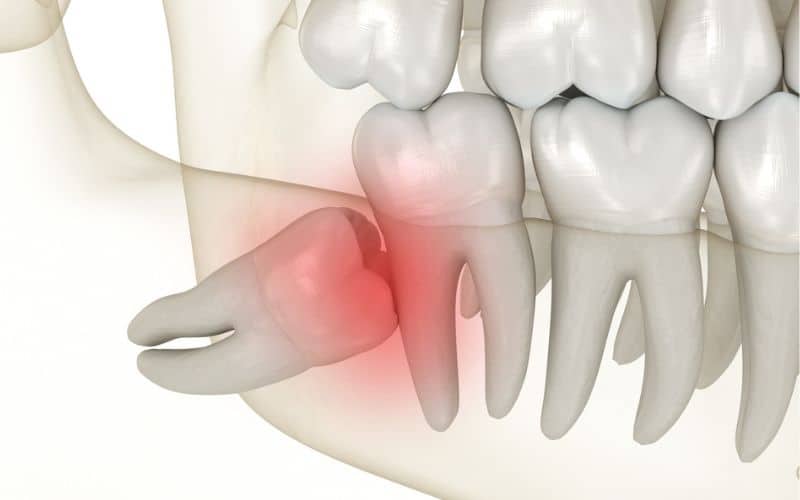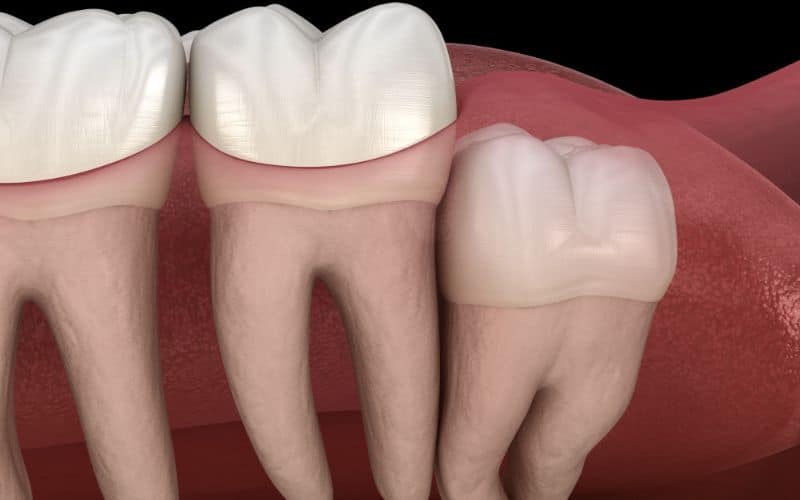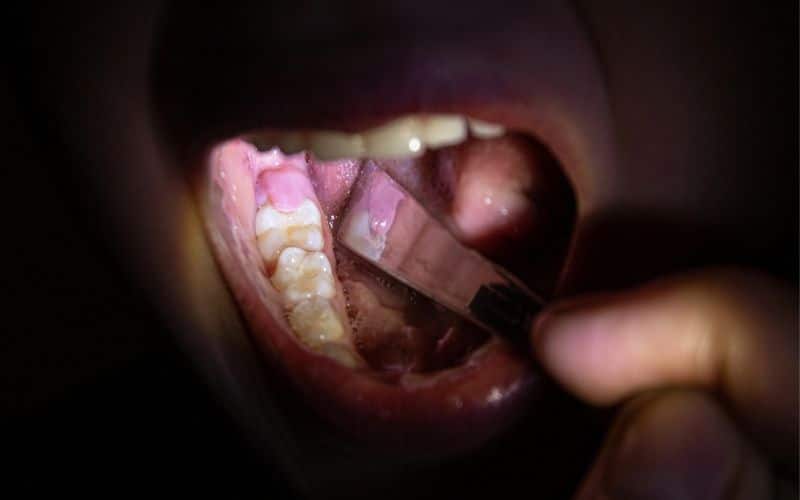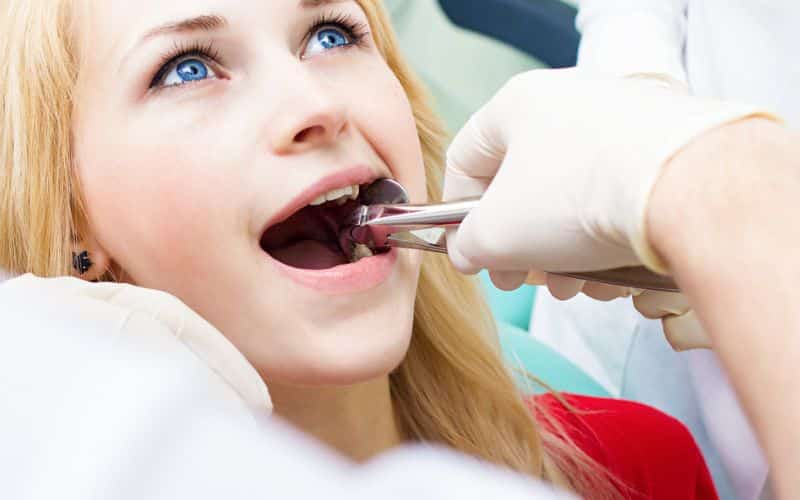Our oral cavities house 700 kinds of bacteria, and wisdom teeth are prone to infections as they come in. The pain that comes from partially erupted wisdom teeth is often dull and can be difficult to treat with over-the-counter medication.
But there’s one way to prevent these problems — get your wisdom teeth removed when your dentist recommends it!
Impacted Wisdom Teeth
Wisdom teeth, also known as third molars, are the last of an adult’s 32 permanent teeth to grow. It’s not uncommon for wisdom teeth to become impacted or trapped in the jaw bone or gum tissue due to lack of space, an abnormal angle, or other factors. Impacted wisdom teeth are difficult to clean, and can cause pain, swelling, and infections of the gums or mouth. In rare cases, impacted wisdom teeth can develop cysts or tumors that can destroy adjacent tissues and bones.
A dentist can determine if your wisdom teeth are impacted through regular dental exams and x-rays. A simple procedure called a tooth extraction can remove partially or fully erupted impacted wisdom teeth, preventing further damage to your oral health and reducing the risk of future problems.
The difficulty of removing a wisdom tooth correlates with how far it has erupted into the mouth and jaw. A tooth’s position can be mesial (angled toward the front of the mouth), vertical, or distal (angled toward the back of the mouth). Each type of impacted wisdom tooth requires a different treatment plan, but all will require a local anesthetic to be administered before the removal procedure begins. In most cases, a dentist will divide the impacted tooth into sections to make it easier to remove. This will minimize the amount of bone that has to be removed with the tooth.
Mesial Impactions

As the wisdom teeth are the last to develop, they can sometimes become trapped in the jaw bone or gum tissue. This is because of the limited space and their angular position in your mouth. They can also become partially erupted, which causes a host of problems including bacterial infections and cysts.
Mesial impactions are the most commonly occurring type of impacted wisdom tooth. They are angled towards the front of your mouth and push against the molar in front of them. They may be partially or fully impacted and are generally not good candidates for removal.
On the other hand, distal impacts are more likely to require extraction because of their proximity to the back of your jaw and teeth. These are angled at the back of your mouth and are often completely or partially impacted.
These types of wisdom teeth are the most difficult to remove and often require an oral surgeon with a degree in dental surgery. The oral surgeon will inject a local anesthetic to numb the area, and they will open the flap of gum tissue to expose the tooth. They will then drill into the surface of the tooth and remove it in pieces. After the procedure, you will be asked to bite down on gauze for up to an hour to help a blood clot form in the empty socket.
Vertical Impactions

A vertical impaction means that the wisdom tooth grows perpendicular to the jaw bone. These are much less common than mesial or distal impactions, and they also tend to be more difficult to remove. Often, the dentist will need to make an incision in the bone to access the impacted tooth and remove it. This will cause some bleeding, bruising, and pain, but these symptoms are typically mild and will resolve with time. If necessary, a dentist can also divide an impacted wisdom tooth into smaller pieces, which makes it easier to extract.
Wisdom teeth become impacted when there isn’t enough room in the mouth for them to grow normally. When this happens, the teeth may not erupt at all or they may erupt in an angled fashion that causes them to press against other teeth or to develop cysts. A partially erupted wisdom tooth can also be harder to clean, which can lead to cavities and gum disease. When this occurs, it’s important to have the impacted tooth removed as soon as possible. This can help prevent further damage to the surrounding teeth, the jawbone, and the gums. Moreover, it will help reduce the risk of infection and cysts. In most cases, wisdom teeth that are removed will heal more quickly and with fewer complications than those that do not get extracted.
Pericoronitis

If you have a gum flap around your partially erupted wisdom tooth, you may develop a condition called pericoronitis. This is a painful inflammation that occurs when food particles get wedged in the space and create an infection. It’s a problem that can be both long-term and acute. Acute pericoronitis can cause fevers, swelling, and pain in the back of your mouth or jaw. It can also spread to your gums or other parts of the body if left untreated.
A dentist will examine the area to confirm a diagnosis of pericoronitis. They will take X-rays to see how the third set of molars are coming in and may have you use an oral irrigator or a special rinse to help clear away debris under the gum flap. They might also prescribe a pain reliever like ibuprofen or acetaminophen to manage the discomfort.
If your symptoms are mild, they might be able to resolve themselves as the wisdom tooth comes in and you continue to clean the area. However, if they’re severe, your dentist will likely recommend that you undergo minor surgery to remove the flap and possibly the wisdom tooth. They’ll also prescribe oral antibiotics to treat any infection that may have developed. The surgery is usually quick and fairly painless, but the recovery period can be a bit lengthy, especially for older patients.


